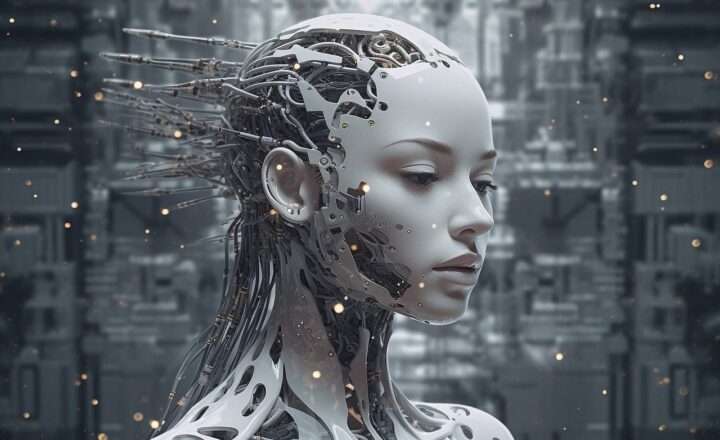Understanding Machine Learning: The Basics Behind AI-Powered Predictions
November 11, 2024

Machine learning (ML) has emerged as one of the most transformative technologies of our time, playing a crucial role in the evolution of artificial intelligence (AI). From recommending products on e-commerce sites to enabling self-driving cars, machine learning powers applications that we encounter every day. Despite its prevalence, many people may not fully understand what machine learning is and how it works. In this article, we will delve into the basics of machine learning, explore its types and applications, and demystify some common misconceptions.
1. What is Machine Learning?
At its core, machine learning is a subset of artificial intelligence that focuses on the development of algorithms that allow computers to learn from and make predictions or decisions based on data. Instead of relying on explicitly programmed instructions, machine learning algorithms improve their performance as they are exposed to more data.
The term “machine learning” was first coined by Arthur Samuel in 1959. He described it as a program’s ability to automatically learn and improve from experience without being explicitly programmed to do so. Imagine teaching a child to distinguish between cats and dogs; instead of simply telling them the differences, you show them various examples, allowing them to learn to recognize the traits on their own. Similarly, machine learning trains algorithms to learn from historical data, enabling them to predict future outcomes based on patterns identified within the data.
2. Types of Machine Learning
Machine learning can be broadly categorized into three main types, each serving different purposes and requiring varying levels of supervision:
- Supervised Learning: In supervised learning, algorithms are trained on labeled datasets, meaning the training data includes input-output pairs. The model learns to map inputs to their corresponding outputs, adjusting based on the errors it makes. Common applications include spam detection, image recognition, and predictive analytics.
- Unsupervised Learning: Unsupervised learning involves training algorithms on unlabeled data, meaning there are no predefined outputs. The model seeks to identify patterns and structures within the data, such as grouping similar items together (clustering) or uncovering relationships between variables (association). Applications include customer segmentation, anomaly detection, and data compression.
- Reinforcement Learning: Reinforcement learning is based on the premise of learning through trial and error. An algorithm, often called an agent, interacts with an environment and learns to make decisions to maximize cumulative rewards. This type is commonly used in robotics, game playing (like AlphaGo), and autonomous systems.
Each type of machine learning offers unique techniques suited for different tasks and challenges, making the field incredibly versatile and powerful.
3. Key Concepts in Machine Learning
To gain a deeper understanding of machine learning, it’s important to familiarize yourself with some key concepts:
- Features: Features are individual measurable properties or characteristics of the data used in machine learning. For example, in a dataset predicting house prices, features could include square footage, number of bedrooms, and location. The selection of relevant features is critical for creating effective models.
- Training and Testing Sets: Data is usually split into training and testing sets. The training set is used to teach the model to achieve its predictions, while the testing set evaluates the model’s accuracy on new, unseen data. This helps prevent overfitting, where a model performs well on training data but poorly on new data.
- Algorithms: There are various machine learning algorithms tailored to specific types of tasks, including linear regression, decision trees, support vector machines, and neural networks. Choosing the right algorithm depends on the problem at hand and the nature of the dataset.
- Overfitting and Underfitting: Overfitting occurs when a model learns noise or random fluctuations in the training data instead of true underlying patterns. This leads to poor performance on new data. In contrast, underfitting happens when a model is too simplistic to capture the underlying trends. Balancing these two is crucial for developing robust models.
These concepts form the foundation of machine learning and are essential for understanding how to build and evaluate predictive models effectively.
4. Applications of Machine Learning
Machine learning is applied across a multitude of fields and industries. Here are just a few examples of its real-world applications:
- Healthcare: Machine learning is revolutionizing healthcare by improving diagnostic accuracy, predicting patient outcomes, and personalizing treatment plans. Algorithms can analyze medical images, such as X-rays and MRIs, to detect anomalies that may escape human eyes.
- Finance: In the financial sector, machine learning algorithms are used for credit scoring, fraud detection, and algorithmic trading. By analyzing historical transaction data, ML can identify patterns that indicate potential fraud or assess creditworthiness more accurately than traditional methods.
- Retail: E-commerce platforms utilize machine learning for personalized product recommendations, dynamic pricing, and inventory management. Companies like Amazon employ algorithms to suggest products based on browsing history and purchase behavior, significantly enhancing the customer experience.
- Transportation: Machine learning is fundamental to the development of autonomous vehicles. By processing data from cameras, radar, and sensors, ML algorithms can interpret their surroundings, make real-time decisions, and improve road safety.
These examples illustrate how machine learning is influencing and improving various sectors, driving innovation and efficiencies.
5. Common Misconceptions About Machine Learning
As machine learning becomes more prevalent, several misconceptions are often encountered. Here are a few:
- Machine Learning Equals Artificial Intelligence: While machine learning is a subset of AI, it does not encompass the full spectrum of artificial intelligence. AI includes various techniques beyond ML, such as rule-based systems and expert systems.
- ML Can Learn on Its Own Without Data: Data is the backbone of machine learning. Without sufficient, relevant data to train on, ML algorithms cannot learn or make accurate predictions.
- Machine Learning is Infallible: While ML can be extremely powerful, it’s not perfect. Algorithms can make mistakes, and the results are only as good as the data and features provided. Continuous evaluation and refinement are necessary to maintain model performance.
Addressing these misconceptions can help individuals better understand the potential and limitations of machine learning technology.
Conclusion
Machine learning is an essential technology driving the future of artificial intelligence. As we’ve explored in this article, it involves algorithms that learn from data, making it possible for computers to make predictions and decisions autonomously. With various types of machine learning and far-reaching applications across industries, understanding the basics of ML is critical for anyone interested in the future of technology.
As the field continues to evolve, further education and engagement with machine learning concepts will become increasingly important. Whether you’re a student, a professional in a related field, or simply a technology enthusiast, grasping the fundamentals of machine learning will empower you to navigate this exciting landscape and harness its potential to effect meaningful change on both a personal and societal level.







